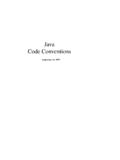Transcription of AIA CAD Layer Guidelines - Duke University
1 Key: = Section contains a downloadable Microsoft Excel A Brief History of the CAD Layer Layer Name Hierarchy of Data Before You Discipline Designator, Level Discipline Designator, Level Major Minor Status (Phase) Drawing View Layer Drawing View Field Drawing View Layer Annotation Layer Annotation Field Annotation Layer Appendix A - List of Discipline Designators, Major and Minor Groups, and Status Fields Discipline Major Minor Status Appendix B - Common Layer Lists by Architectural Layer Civil Layer Contractor/Shop Drawing Layer Electrical Layer Distributed Energy Layer Equipment Layer ListAIA CAD Layer GuidelinesTABLE OF CONTENTSPage 1 of 90 AIA CAD Layer Guidelines | United States National CAD Standard.
2 Fire Protection Layer General Layer Geotechnical Layer Hazardous Materials Layer Interiors Layer Landscape Layer Mechanical Layer Operations Layer Plumbing Layer Process Layer Resource Layer Structural Layer Survey/Mapping Layer Telecommunications Layer Other Disciplines Layer Appendix C - Complying with NCS and ISO Field Field Codes and ISO 13567 Field Names and "Discipline Designator" vs. "Agent Responsible" "Agent Responsible" and Professional "Discipline Designator" and the Building Life "Discipline Designator" and ISO 13567 Field Code NCS and ISO 13567 Implementation NCS and ISO 13567 Implementation GuidelinesVirtually all vector-based CAD systems support the concept of layers.
3 This function allows building design information to be organized in a systematic fashion, facilitates the visual display of the information on a computer screen, and allows the information to be efficiently converted to the conventional print media of drawings. Efficient use of layers can reduce document preparation time and improve document coordination. Organizing data by layers allows a single CAD file to contain a wealth of information about a building or facility. By turning selected layers on or off, data can be created, reviewed and edited according to a hierarchy that simulates the physical organization of building systems, the relative position of building elements, or the sequence of American Institute of Architects (AIA) published the first edition of CAD Layer Guidelines in 1990.
4 The early success of the first edition and rapidly evolving technology resulted in the second edition being published in 1997 . The most significant change between the first and second editions was the elimination of the "short" Layer name A BRIEF HISTORY OF CAD Layer Guidelines (CLG)Page 2 of 90 AIA CAD Layer Guidelines | United States National CAD Standard, v5format and the adoption of the long Layer name format as a single standard. The second edition also included additional Layer field codes for remodeling projects, added new discipline designations for interiors, telecommunications, and other disciplines, and improved the method of organizing drawing July 1997 , the AIA agreed to incorporate CAD Layer Guidelines into the emerging United States National CAD Standard (NCS), a project of the National Institute of Building Sciences (NIBS).
5 The AIA and NIBS were joined in that effort by the Construction Specifications Institute (CSI) and what is now known as the CADD/GIS Technology Center of the Army Corps of Engineers. CSI and CADD/GIS Technology Center agreed to incorporate their own publications, the Uniform Drawing System and the Plotting Guidelines , respectively, into the NCS. These four constituent publishers, as they came to be known, were joined by a number of building design and construction industry organizations in developing and publishing the March 1999, the National CAD Standard Project Committee (NCS Project Committee) formally accepted CAD Layer Guidelines , Second Edition (with minor amendments) as a constituent document of the NCS Version , published in July 1999.
6 The NCS Project Committee immediately set to work on publication of Version , which was published in confusion resulted from the lack of "alignment" between the "Second Edition" of CAD Layer Guidelinesand "Version " of the NCS. Because CAD Layer Guidelines , Second Edition was published before, and later incorporated into, the NCS Version , this could not be avoided. With publication of the NCS Version , this problem was corrected by giving the constituent document an entirely new name. For the first time, "AIA" became part of the title of the publication, and the numbered "editions" were abandoned. As a result, this publication became known as AIA CAD Layer Guidelines : National CAD Standard - Version Subsequent editions of the NCS adopted the same Layer name format is organized as a hierarchy.
7 This arrangement allows users to select from a number of options for naming layers according to the level of detailed information desired. Layer names consist of distinct data fields separated from one another by dashes. A detailed list of abbreviations, or field codes, is prescribed to define the content of layers. Most field codes are mnemonic English abbreviations of construction terminology that are easy to are four defined Layer name data fields: Discipline Designator, Major Group, two Minor Groups, and Status. The Discipline Designator and Major Group fields are mandatory. The Minor Group and Status fields are optional. Each data field is separated from adjacent fields by a dash ("-") for complete NCS Layer name format, showing the Discipline Designator, the Major Group, two Minor Groups, and the Status NCS allows you to select from a number of format options for creating Layer names.
8 It is recommended that you select the options that you wish to use for Layer names on a given project, and then apply the resulting format consistently for all Layer names on that : For conceptual conformance to ISO 13567, Organization and Naming of Layers for CAD, the Layer name format and length must be the same for all layers on a given project. See CLG Appendix C - Complying with NCS and ISO 13567, CLG section for information about ISO conformance. Layer Name HIERARCHY OF DATA BEFORE YOU DISCIPLINE DESIGNATOR, LEVEL 1 Page 3 of 90 AIA CAD Layer Guidelines | United States National CAD Standard, v5A typical Layer name showing the required data fields that only the mandatory discipline character is shown, creating a Level 1 Discipline typical Layer name showing the required data fields that the mandatory Level 1 discipline character is supplemented by the optional discipline modifier to create a Level 2 Discipline Discipline Designator denotes the category of subject matter contained on the specified Layer .
9 The Discipline Designator is a two-character field. The first character is the discipline character, and the second character is an optional modifier. The Discipline Designator is described in greater detail in UDS Section For a complete list of Discipline Designators see CLG Appendix A - Discipline Designators, CLG section and UDS Appendix A - Discipline Designators, UDS section 1 DISCIPLINE DESIGNATORSABCDEFGHILMOPQRSTVWXZA rchitecturalGeotechnicalCivilProcessElec tricalFire ProtectionGeneralHazardous MaterialsInteriorsLandscapeMechanicalOpe rationsPlumbingEquipmentResourceStructur alTelecommunicationsSurvey / MappingDistributed EnergyOther DisciplinesContractor / Shop DrawingsThe optional second character is used to further define the discipline character.
10 As an example, the Level 2 Discipline Designators for Architectural are shown:DesignatorDescriptionAArchitectura lADArchitectural DemolitionAEArchitectural ElementsAFArchitectural FinishesAGArchitectural GraphicsAIArchitectural InteriorsASArchitectural SiteAJUser DefinedAKUser DISCIPLINE DESIGNATOR, LEVEL 2 Page 4 of 90 AIA CAD Layer Guidelines | United States National CAD Standard, v5A typical Layer name showing the required data fields only. The mandatory Major Group field is highlighted:A-WALLA typical Layer name showing one optional Minor Group field:A-WALL-FULLA typical Layer name showing two optional Minor Group fields:A-WALL-FULL-TEXTA typical Layer name showing the location of the optional Status field:A-WALL-FULL-TEXT-NFor a complete list of Discipline Designators see CLG Appendix A - List of Discipline Designators, Major and Minor Groups, and Status Fields, CLG section and UDS Appendix A - Discipline Designators, UDS section major group is a four-character field that identifies a major building system.






